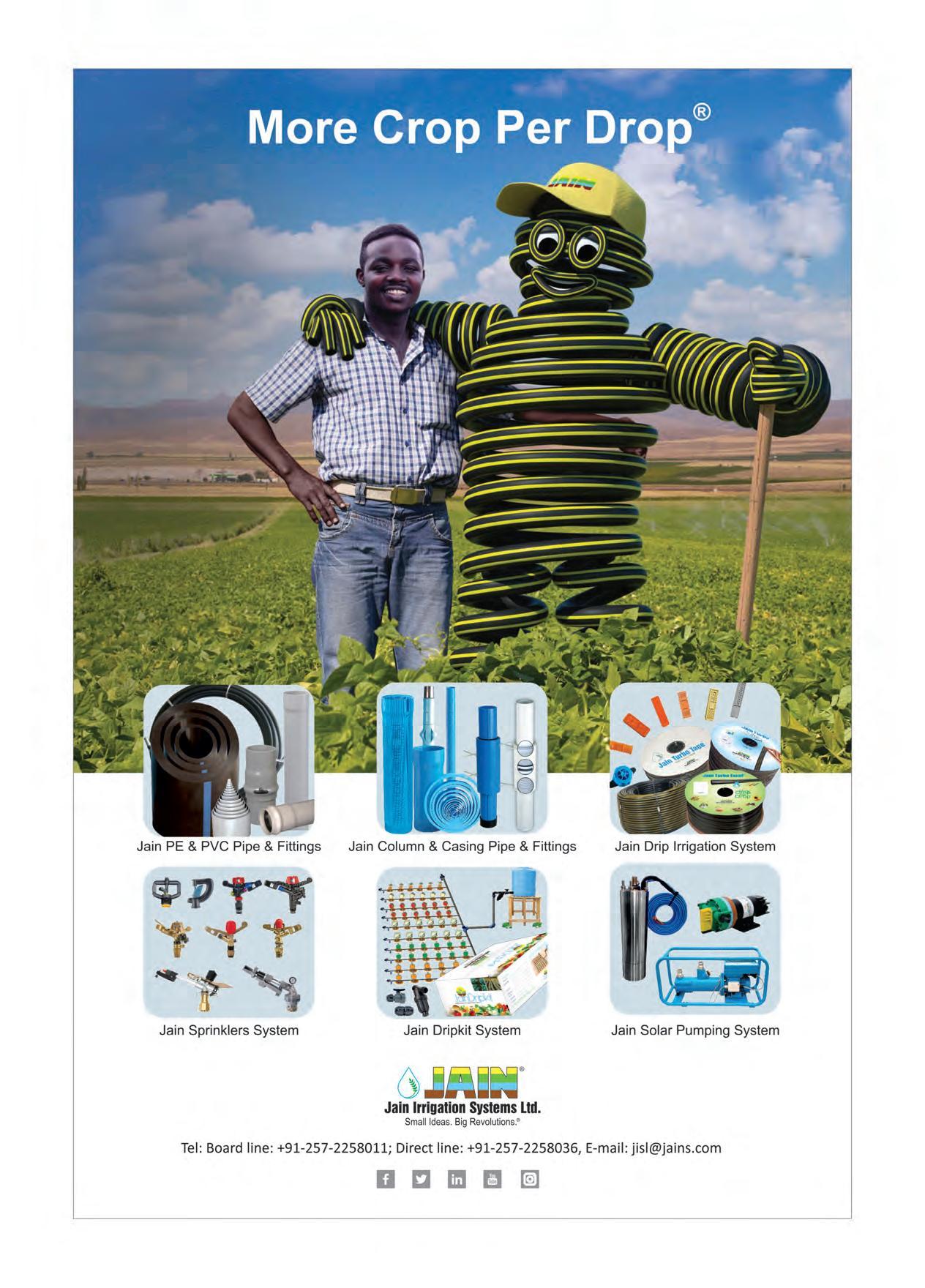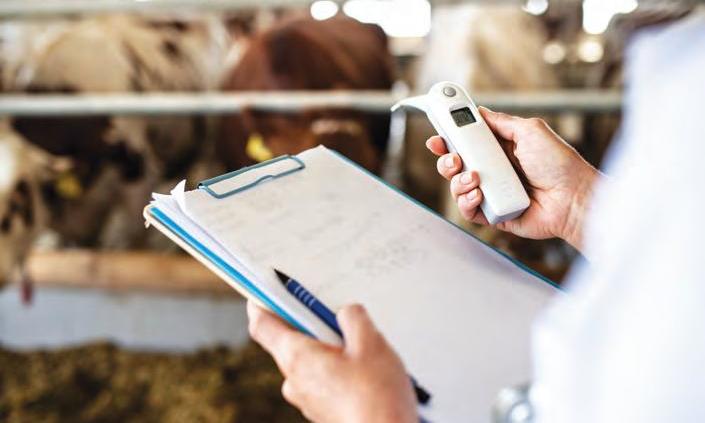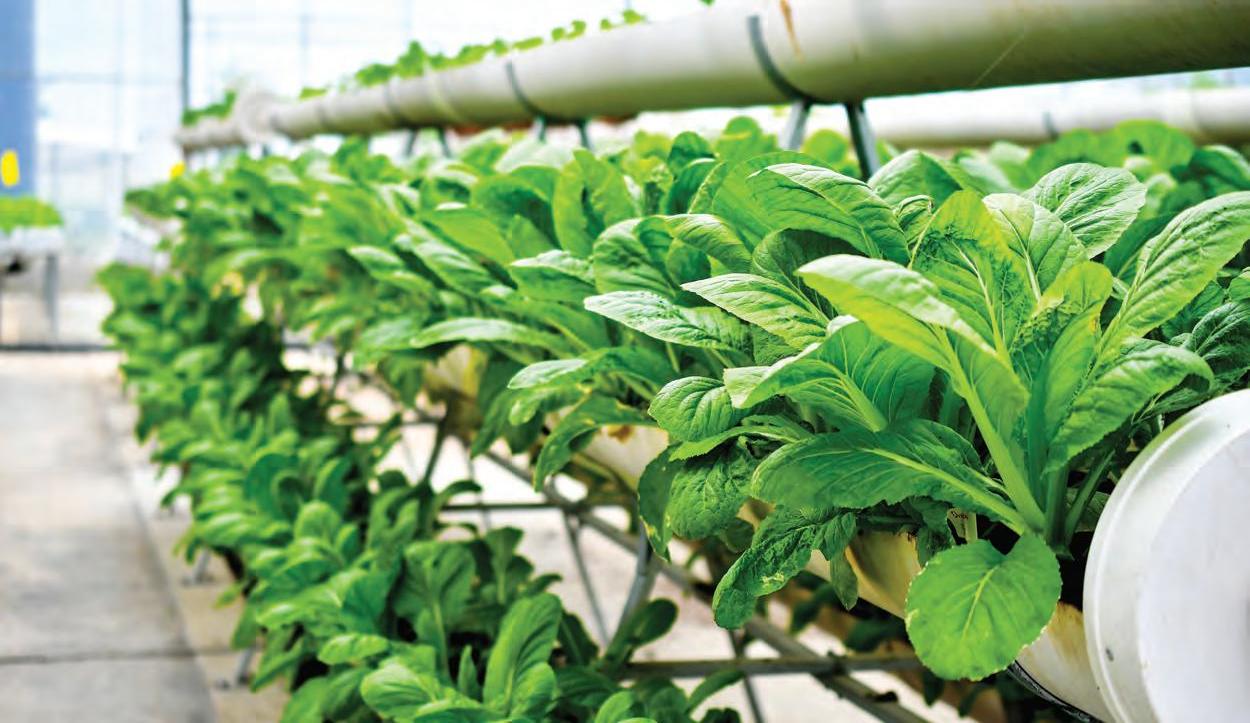
24 minute read
Equipment
Trends such as vertical farming and the use of data are gaining significance to enable food systems to cope with increasing challenges.
Adopting modern methods will be important to ensure an efficient food supply chain.
Novel methods revitalising agriculture

THE GLOBAL PANDEMIC has highlighted the need for proactive measures to strengthen food systems. Andre Laperriere, the executive director of Global Open Data for Agriculture and Nutrition (GODAN) highlights the fragility of the supply chain and the need to implement vertical farming to create selfdependant cities. "In the current climate, adopting modern methods in agriculture will be key to ensuring an efficient food supply chain. With the challenges we are faced with, the need to develop more resilient food economies which make cities, regions and communities more sustainable and selfsufficient is crucial.
Adopting to vertical farming methods would be one of the best answers to creating sustainable and resilient local food systems, especially if used in cities or areas where land access is limited. This will also help lift the strain on other allied supply chains and benefit the environment though minimal carbon footprints.
It is perhaps one of the most efficient and innovative methods, as it allows for more crops to be grown with soil-less farming techniques. These systems can be carried out in shipping containers, buildings and even tunnels, makes it easier to distribute food and develop greater self-sufficiency
Cities and towns can really benefit from this innovation for creating a local supply chain, leaving large farms to tackle critical intensive agricultural processes. Finally, to scale up the process to feed cities the size of London or Berlin, we would need to ensure data transparency and knowledge sharing of best practices. Vertical farming techniques already rely on an extensive array of data (to better calibrate inputs within the vertical farming among other things), and we must ensure this information is accessible for innovators
“Adopting to vertical farming methods would be one of the best answers to creating sustainable and resilient local food systems,” Andre Laperriere, executive director, GODAN.
across the world to replicate, collaborate and finetune this innovation in an open source platform. Unless we ensure open data in this field, we would deny the world a better chance at solving one of the most deep rooted problems - hunger and sustainability," said Laperriere.
GODAN - Global Open Data for Agriculture and Nutrition, a UN and UK & US government supported initiative to propagate open data polices in agriculture and nutrition across the world.
Technology and data
The pandemic has shown us the significance of technology to stay connected. Technological advancements play a major role in keeping a steady supply of food crop in the market, as well as in improving the livelihoods for farmers.
A data programme spearheaded by UN's Economic Commission of Africa (UNECA) and the Global Partnership for Sustainable Development Data (GPSDD) aims to transform Africa's agriculture.. The Africa Centre for Statisitcs is exploring innovative methods such as an earth observation satellite to provide information on agriculture. h
Precision mowing and ground tracking enable the MASTER and PRO models to provide optimum results.
Pöttinger's mower technology enhances forage quality
PÖTTINGER, THE GRASSLAND specialist's ALPHA MOTION technology for front mounted mowers on the NOVACAT and EUROCAT has been popular all over the world. The new MASTER and PRO models have given a new dimension to best forage and precision mowing.
The new MASTER and PRO models are attached to the tractor using a three-point mount, eliminating the need for mounting via the Weiste A-frame and they can be easily mounted to any tractor.
The MASTER models have the proven linkage system from the ALPHA MOTION mowers as well as a sturdy cutter bar with TRI DRIVE for better power transmission and an extended service life.
The cutter bars of Pöttinger disc mowers have gained recognition for cutting quality, low drag resistance and strength.
Advanced linkage geometry of the carrier frame
With the ALPHA MOTION headstock the entire carrier frame adapts to the ground contours. The carrier frame slants downwards on downhill gradients and upwards when ascending. Even at high speed and on wet ground, due to perfect guidance over every contour, it offers sward protection. The MASTER provides ground tracking of + /- 16° crossways and + 13° / -7° in the direction of travel while the PRO users benefit from +/- 16° crossways and +12° / -9° in the direction of travel.
The mechanical components are subjected to much less stress due to the harmonious flow of the mower and, as a result, wear is reduced and the service life of the mower extended considerably.
The fine difference
ALPHA MOTION MASTER front mowers are 34 cm closer to the tractor due to their short headstock. The centre of gravity is also nearer to the tractor. At the same time, the distribution of weight between the front and rear axles has been improved. With a weight saving of more than 40 kgs, fuel consumption is minimised. The ground clearance in the transport position is 30 cm
NOVACAT 301 ALPHA MOTION PRO.
on all models. Due to the limited mounting space, however, it is not possible to fit ALPHA MOTION MASTER models with ED or RCB conditioners. The new models feature an attractive front mower design with a light gray carrier frame.
The new NOVACAT ALPHA MOTION PRO front mowers include many details such as display of the correct lifting height in working position from the cab and folding front guard. This makes the cutter bar very easily accessible. Cleaning and
The new NOVACAT ALPHA
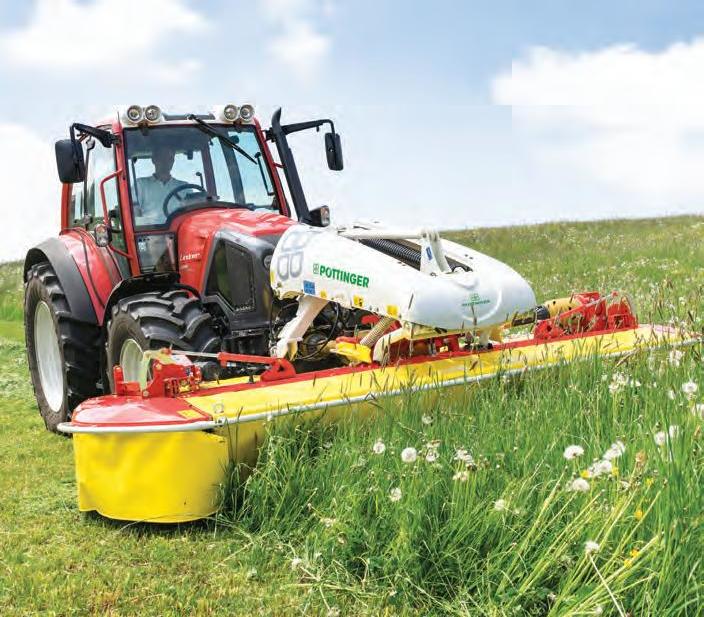
blade replacement is easier. Another advantage is the convenient adjustment of the suspension springs. The cover can be easily removed for this purpose. The central greasing points on the headstock make servicing even easier. The optimised drive train does not require a safety chain for the PTO shafts.
The disc mowers can be used without conditioner with swath doors or in combination with an ED tine conditioner or RCB roller conditioner. The unique front mower received the “Machine of the Year 2020” award at Agritechnica 2019.
Pöttinger mowers offer maximum convenience with the best ground tracking and cutting quality, low disintegration losses and high precision work without timeconsuming adjustments. The NOVACAT and EUROCAT ALPHA MOTION MASTER and PRO mower offer these advantages, providing the basis for optimum forage quality and as a consequence the best forage. h
The Malabo Montpelliar Panel in conjunction with Power For All is providing valuable insights into the synergies between renewable energy - based minigrids and Africa's agricultural growth.
THE MALABO MONTPELLIAR Panel (MMP) has been working extensively to identify and prepare reports on strategic areas as defined by the Malabo Declaration requiring government intervention, and bringing the findings to engage a wider audience. Power for All is focused on ending energy poverty.
In a webinar organised by MMP in March 2020, Professor Nuhu Hatibu, Regional Head - East Africa for AGRA, explained the correlation between connecting rural areas and energy by drawing upon his experience in Tanzania, Uganda and Rwanda. The Alliance for a Green Revolution in Africa (AGRA) is working to drive transformation in agriculture and food systems in sub-Saharan Africa. It aims for an integrated approach between energy and the food sector.
The presentation highlighted the role of decentralised renewable energy in improving food security, increasing productivity and employment, in areas ranging from cold storage to solar pumps. "Solar panels and building mini-grids is gaining importance across Africa," said Professor Hatibu, adding that one of the reasons these minigrids are gaining popularity in rural regions across the continent, is that they deal with a small
There is need for an integrated approach between energy and the food sector.
defined area. He added that solar powered irrigation is a game-changer, but the benefits of mini-grids go beyond irrigation, in areas including agro-processing, cold storage and transportation.
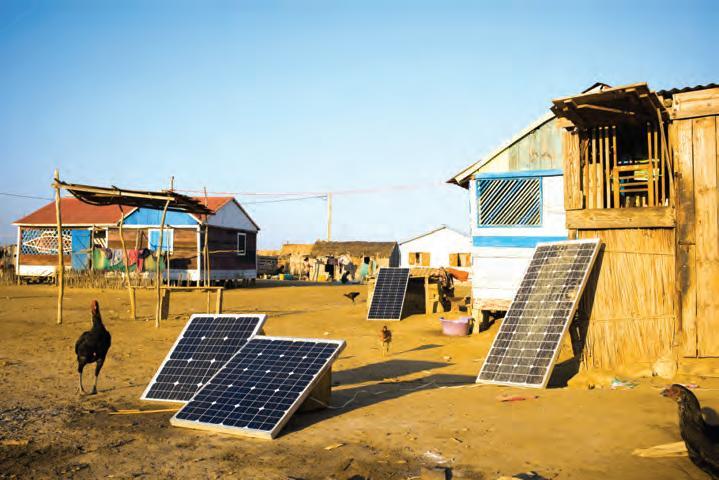
Lessons from success stories
Professor Hatibu quoted the examples of companies that have been successfull in utilising renewable energy for benefits across the agricultural value chain. The use of hydraulic oil presses present a great opportunity for reduction in operation costs and help use energy more efficiently than expellers. At the milling stage of agriculture, moving from diesel to mini-grid driven electricity, produces greater efficiency and lesser food losses.
In Tanzania, demand for Tilapia is higher than supply and spoilage is a challenge. Cold storage company Jumeme collaborates with Tanzanian local communities to collect and rear Tilapia using mini -grid electricity, to freeze the fish and supply it fresh to consumers in Dar-e-Salaam all the way from Lake Victoria sites. Another example is of Equatorial Power that has been transforming lives in the port village Bugarula in Idjwi island, for cold chain intervention in the preservation of meat, fish and milk, increasing potential incomes.
These examples show the possibility and sustainability of decentralised renewable energy solutions in the agri-food sector. However, Professor Hatibu went on to list the conditions that will determine the success of decentralised renewable energy solutions in transforming food systems.
He pointed out the need for effective policies and regulations, capacity building and vocational as well as technical training, providing market access, business models to run the mini-grids efficiently together with the data and analytics required and the importance of raising awareness about the benefits of renewable energy mini-grids.
Professor Nuhu Hatibu, Regional Head - East Africa for AGRA said that solar powered irrigation is a game-changer, but the benefits of mini-grids go beyond irrigation, in areas including agro-processing, cold storage and transportation.
COVID-19 and re-localisation
Roberto Ridolfi, Assistant Director General at the UN's Food and Agriculture Organisation (FAO), spoke about the role of decentralised energy as a driver of the sustainability of food systems and reducing food loss.
He drew attention to the impact of the COVID-19 situation on food systems, enhancing the need for localised and regional food systems (such as in the case of the Mediterranean diet), through efforts to get consumers and producers closer. "Coordinated action towards high impact and risk-prone sectors is needed to produce a sustainable development impact by lowering costs, increasing efficiency and catalysing private capital," he said.
For addressing the financial gap that will emerge stronger due to the pandemic, Ridolfi stresses the need for more synergic partnerships between the government, finance and the private sector, as well as SDG-compliant investments. h
An on-farm experiment at the Zambian-German Agricultural Knowledge and T raining Centre in Chisamba revealed the potential of mechanised conservation agriculture to increase productivity.
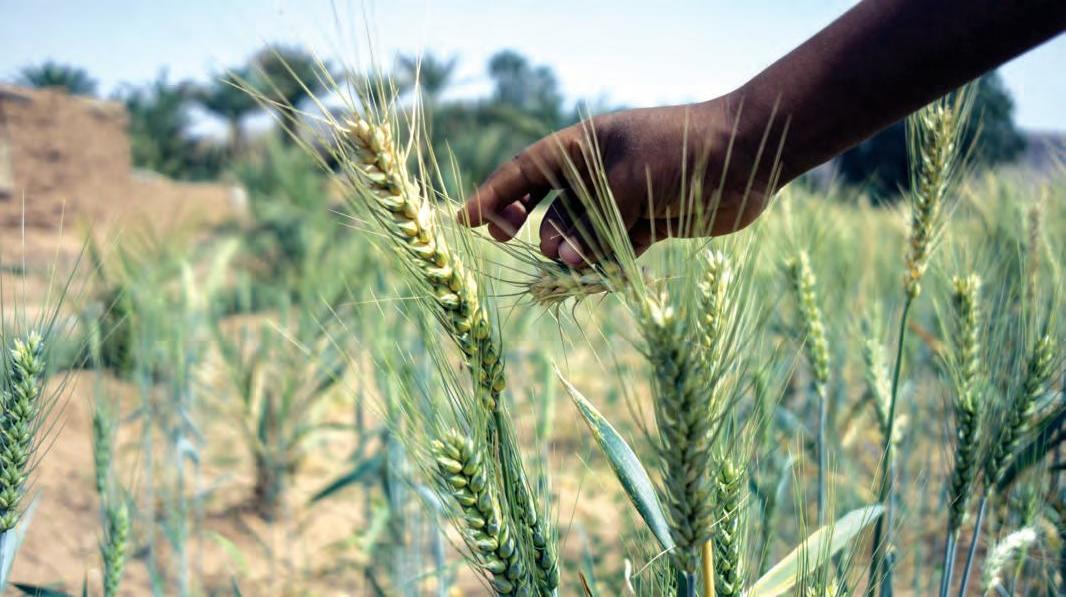
Improving mechanised agriculture in Zambia
Conservation agriculture in Zambia has been adopted mainly by small-scale farmers.

EVERYBODY IN ZAMBIA concurs with the reality of climate change since the impacts are visible across the entire nation. Small and mediumscale farmers who entirely rely on rainfed agriculture for both crops and animal production are the most affected by the impacts of climate change across Zambia.
The climate-adapted farming methods project (CAFM), an initiative of the Zambian-German Agricultural Knowledge and Training Centre (AKTC), started in 2019, is aimed at minimising climaterelated yield losses and securing income among small-scale and emergent farmersm through the practice of mechanised conservation agriculture (MCA). AKTC is a bilateral cooperation between the German Federal Ministry of Food and Agriculture and the Zambian Ministry of Agriculture. It is located at the Golden Valley Agricultural Research Trust (GART) in Chisamba. Conservation agriculture in Zambia has been adopted mainly by small-scale farmers though they are facing drudgery and mechanisation challenges. The farmers use hand hoes and animal-drawn implements for making planting basins. The manual digging of holes is too labour intensive and time-consuming. This has made the practice unappealing to emergent and large-scale farmers who operate on large pieces of land.
The benefits of conservation agriculture among small-scale farmers compared with conventional counterparts underthe same climatic conditions cannot be overemphasised. They include improved soil structure, water infiltration, soil microbial activity, time and labour reduction and yield. The greatest barrier to conservation agriculture adoption and upscaling in Zambia is the lack of appropriate mechanisation for land preparation, planting and weed control.
The CAFM on-farm experiment on 27 ha of rainfed farming, was conducted to ascertain the performance of MCA versus conventional farming with maize and soybean crops, and to analyse whether they are economically viable.
The experiment
To effectively access the effects of MCA and conventional farming on maize and soybean performance, three tillage practices were employed: discing (conventional), ripping and direct planting (conservation). The residues on the conventional plots were first burnt before discing; following the common practice of burning of residues every season among conventional farmers. With the 60 hp tractor, land preparation (disc harrowing and ripping), planting (including no-till), fertiliser application and weed control were done in time. Being the first trial, the maize-soybean rotation will be done in the subsequent 2020-2021 season. With constrained rainfall this season, interesting observations were made throughout the crop’s development under the various tillage types.
In general, good plant population was observed on the three tillage types. However, uneven germination was noted on disced plots, effects of which translated
to the growth of crops throughout the season. Seeds planted on the disced plots were deprived of moisture due to the excessive evaporation during the dry spell. The residue cover on the conservation agriculture plots cushioned the crops from birds and ants attack. The crops on the conservation agriculture plots received least water stress during a two-week dry spell in December. Due to better water infiltration, soil moisture contents were highest in no-till plots and least in disced plots. Soil temperature and evaporation were higher in disced plots than in the ripped and no-till plots.
The time taken in land preparation and planting were double in the disced and ripped plots compared to no-till plots. Less amount of fuel was used on the no-till plots compared to the disced and ripped plots. Similarly, labour costs were highest in disced plots. Weed control, top-dressing and insect control operations recorded insignificant time, labour and fuel differences. Physical inspections reveal taller crops with bigger cobs in MCA plots compared to disced plots.
These preliminary results indicate that MCA is not only a climate-smart way of farming but also time-saving and more economically sound. The reduced fuel consumption and low labour costs can be used for more farm inputs while the time saved may be turned to other economically viable activities.
Farmers from the neighbouring districts of Chisamba and Chibombo got hands-on experience on MCA land preparation, planting and weed control at AKTC during the on-farm demonstrations throughout the season. This culminated in a successful field
MCA is a climate-smart way of farming, timesaving and more economically sound.
day on the 25th February 2020 attended by around 200 farmers and stakeholders. During this field day, the crop’s development under different tillage types was showcased. Among the institutions and stakeholders present were: GART, Conservation Farming Unit (CFU), BAYER AG, BHBW, Omnia fertilizers, Precision Farming, Seed Co, University of Zambia (UNZA) and the University of Hohenheim in Germany.
The outcomes of the CAFM project are sure demonstrations that MCA has the potential to upscale conservation agriculture adoption and overall agricultural productivity in Zambia. Through MCA, agriculture can become more profitable
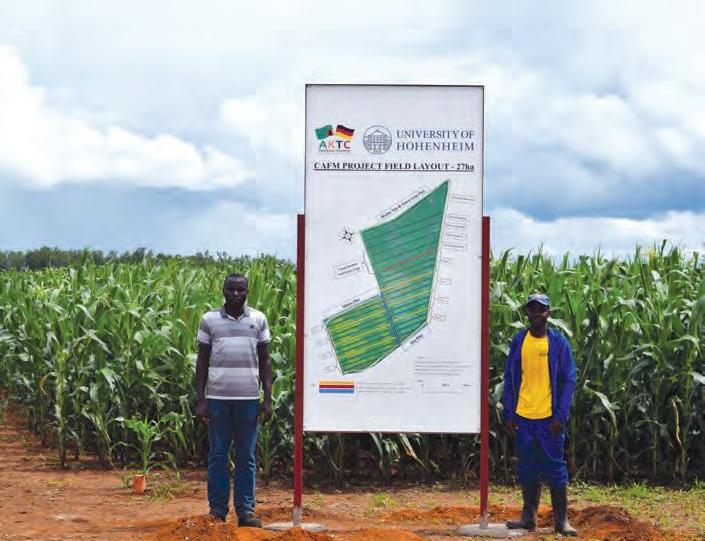
while offering farmers an opportunity to cope with the effects of climate change. This is true because, farmers are able conserve moisture, use less time in their farming activities and minimise cost on fuel. Through MCA, farming as a business is only economically viable but also sustainable since the conservation of soil and water translates to better soil quality and improved yields. To achieve this desired goal, conservation agriculture must be mechanised and both the government and the private sectors have a big role to play.
Godfrey Omulo, CAFM project lead researcher at AKTC and a PhD Candidate at the University of Hohenheim, Germany. h
AGCO continues commitment to sustainable technology solutions
AGCO, A GLOBAL leader in the design, manufacture and distribution of agricultural machinery and solutions, highlighted its commitment to bring farmers sustainable hightech solutions by relaunching its vision.
“Our new vision — sustainable high-tech solutions for farmers feeding the world— better represents our thoughtful approach to helping our farmers and our business continually find better and more sustainable ways to raise the food people need, all around the world,” said Martin Richenhagen, president and chief executive officer of AGCO Corporation. “As the world celebrated the 50th anniversary of Earth Day last month, we felt it was the right time to stress the importance of sustainability in our company’s vision,” he added.
AGCO precision agriculture tools help farms and machines run more efficiently with lower inputs and higher yields. Sustainable productivity arises through technology, innovation and integrated solutions to grow more food and deliver higher farm income.
AGCO creates solutions to reduce stress and maximise comfort while maintaining healthy animals and encouraging natural behaviour. AGCO’s sustainable high-tech solutions enable farmers to do more with less.
Advanced farm machines require less fuel and need to make fewer passes in the field, reducing compacted soil and increasing soil fertility.
Precision technology and agronomic solutions enable farmers to grow and harvest more per acre, making the most of our farmland.
Better sprayer technology enables farmers to apply products only where needed, reducing inputs to grow healthy food.
More efficient harvesting equipment means more crops are captured in the field, and better grain and seed storage mean more goes to market. Next-generation biosecurity, housing and feeding solutions mean safer, healthier and more productive conditions for swine and poultry.
“We don’t want to stop at meeting the needs of today’s farmers; we must support future generations,” added Eric Hansotia, Chief Operating Officer of AGCO Corporation. “We need to continuously bring to market high-tech solutions to support farmers in producing nutritious food while reducing resource and environmental impacts.”
A report by Rocky Mountain Institute highlights the importance of rural electrification in increasing agricultural productivity in Ethiopia, with plenty of oppor tunities for transformation in rural communities, even in times of crisis.
Rural electrification boosting agriculture
The synergies between rural electrification and agricultural productivity, processing and businesses in Ethiopia, as across much of Africa, increases community resilience, according to a Rocky Mountain Institute (RMI) insight brief, Capturing the Productive Use Dividend. In addition to the widespread global economic disruptions caused by COVID-19, territories within the Horn of Africa face the mounting threat of desert locust infestations.
“There is a huge opportunity for Ethiopia to capture an economic dividend and accelerate progress toward national development goals, capturing the benefits of electrification for rural smallholders,” said Francis Elisha, principal at Rocky Mountain Institute.

“In agriculture, electricity can unleash higher farm income and productivity by enabling irrigation, cold storage and post-harvest processing and handling,” said Dawit Mekonnen, research fellow at the International Food Policy
Research Institute (IFPRI).
Beyond obvious public health crises, Ethiopia faces threats to food security including disrupted trade and import channels, price spikes, and delayed or compromised harvest yields. Furthermore, water supplies risk being strained as planting cycles are delayed further into the dry season. Efforts to transform agriculture in Ethiopia continue to be critical in the face of imminent systemic pressure tests. RMI’s insight brief explores the opportunity for mutually assured success among agricultural transformation and rural electrification efforts. In collaboration with the International Food Policy Research Institute, the Ethiopian Ministry of Water, Irrigation and Energy, and the Agricultural
While the economic opportunity is huge, the impact of joint agriculture and rural electrification efforts are especially relevant today.
Transformation Agency, the brief outlines synergies between rural electrification and agricultural productivity, processing, and businesses, and the value that can flow from linking the two. By mapping value chains and opportunities, this analysis demonstrates the US$4bn economic case for a national programme to promote productive electricity use. This would add US$22mn in annual revenue streams for utility and minigrid developers, helping justify investment in power systems for rural institutional loads. While the economic opportunity is huge, the impact of joint agriculture and rural electrification efforts are especially relevant today. Diversifying business activities helps shield rural communities that depend solely on crop yields for income. The increased income would empower these groups to better prepare and protect themselves in times of emergency. Productive uses of energy also help accelerate universal access goals, especially during crises, for facilities such as clinics. Ultimately, electrifying agricultural business activities should encourage equitable growth by extending entrepreneurial opportunities to women and impoverished groups. The evolving situation in Ethiopia, and globally, will involve emergency measures to safeguard systems from being overwhelmed. Given that the timeline of this research predated COVID19, this brief does not directly address ongoing efforts regarding Ethiopia’s critical shocks today. But it provides commentary about increasing community resilience in response to today’s shocks, and in preparation for tomorrow’s. h
Advanced automation and agricultural mechanisation is offering a wealth of possibilities for drones and robots in increasing quality and yields from land.
Agri-robotics: Future farming solutions
PRECISION FARMING TECHNIQUES offer immense potential and may soon make possible, the use of drones to map fields and check crops and agro-bots to harvest fruit, sow seeds, identify and treat weeds with exact doses of pesticide and fertiliser – targeting efforts only in areas that need work, which allows for a reduction in labour, capital costs and emissions.
Yanmar R&D Europe (YRE) in Florence, Italy, focuses on a variety of field-based studies to bring added value to the agriculture industry – which include the two-year ‘SMASH’ project being carried out in cooperation with 10 technology partners to develop a mobile agricultural ‘eco-system’ to monitor, analyse and manage agricultural crops. YRE is paving the way in advanced field robotics research and working with partners to test modular robotic agricultural technologies.
“SMASH is not a single machine, but a series of different devices including a robot, base station, drones and field sensors that together provide vital information to help farmers,” said YRE’s modelling and control engineer Manuel Pencelli.
SMASH or ‘Smart Machine for Agricultural Solutions Hightech' involves the development of a modular robotic platform that employs the latest information communications technology to examine crops and soils, analyse gathered information and provide clear, actionable information to farmers to support crop management.
One of Yanmar’s many roles was to develop control systems for the multipurpose robotic arm for mobile manipulation (including precision spraying), sensor integration for positioning technologies, and autonomous navigation and software
Yanmar R&D Europe is working with partners to test modular robotic agricultural technologies.

development for the control of the system’s mobile base (in collaboration with other partners).
“There have been many partners involved throughout. We needed mechanical expertise for developing the structure of the vehicle, and many ‘communications’ experts because we have a lot of devices that need to ‘talk’ to each other. Our starting point was in fact a tracked vehicle that was originally built for moving along a beach and cleaning the shoreline,” said YRE’s modelling and control engineer Manuel Pencelli.
There are two working SMASH prototypes – one for grapevines and the other for spinach – to cover the two different types of crops that were originally slated for research. The former has already undergone significant testing at a vineyard farm in the Pisa province, where Manuel has been instrumental in demonstrating the possibilities that this robotic ecosystem could offer farmers.
“SMASH is not a single machine, but a series of different devices including a robot, base station, drones and field sensors that together provide vital information to help farmers. A farmer could programme the task that he wants SMASH to carry out, and while he is involved in other activities, this machine could move autonomously, monitoring crops, detecting and treating diseases, and saving the farmer or his workers significant time out in the fields manually checking crops,” said Pencelli.
AI-based technology
SMASH comprises a system designed for a range of precision agriculture technologies, including geomatics, robotics, data mining, and machine learning while taking into account the environmental and social issues facing farmers.
“In addition to all the functions that can be performed by the robotic arm, we also have some attachments that can be mounted on the back of the vehicle for mechanical weeding, or working the soil, as it moves. This work can be done simultaneously, together with the monitoring and detection," Pencelli added.
YRE joined forces with Florence University’s Agriculture Department in order to further advance research activities in the field. The university’s Professor Marco Vieri believed that a holistic approach to research was needed, alongside enabling the latest technologies: “Farming provides food, feed, fibre and fuel for humans, but we also have to consider rural, cultural and historical issues.” h
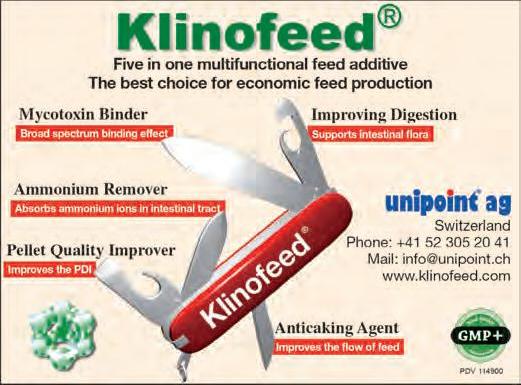
SATURAS LTD, AN ISRAELI startup and the developer of a breakthrough stem-water measurement system for smart farming, has announced that the IoT specialist Kerlink will provide Saturas with LoRa-based sensors for automated irrigation control system.
Kerlink will supply Saturas’s deployments with hardware and software such as its solar-powered Wirnet iStation, Wanesy Management Centre, a robust solution for managing private IoT networks, and Wanesy Network-asa-Service, a turnkey comprehensive offer combining key infrastructure, operations, security, and professional services.
Saturas raised about US$9mn, including a prestigious US$1.65mn H2020 grant from the European Commission in 2019, to support its miniature, tree-embedded sensor system that continuously measures stem water potential (SWP) of trees and vines. SWP is recognised as the most reliable measurement of water stress and an important practical tool for irrigation management.
Saturas is the first company to develop a system for measuring SWP automatically, replacing the cumbersome manual devices that fruit-tree and vineyard growers have used for decades. Using Kerlink stations, the company’s LoRa sensors transmit processed data to central, automated irrigation-control systems, tailoring irrigation to crops’ real-time needs.
“Precision agriculture, led by precision irrigation, is a vital and rapidly growing global business sector with an estimated annual growth rate of over 20 per cent,” said Anat Halgoa Solomon, Saturas co-founder and CEO.
“Smart farming, or ag-tech, is one of IOT’s most important vertical markets but it needs the breakthrough innovations that companies like Saturas are bringing to fields and orchards to deliver on its promise,” said Romain Weryk, Kerlink key account manager.
ADVERTISERS INDEX
Company ................................................................Page
Carfed SA........................................................................9
CNH Industrial Services S.R.L. ....................................36 Institut de Sélection Animale B.V. ................................11 Jain Irrigation Systems Ltd ..........................................35 Moba B.V.......................................................................13 Pan Trade Services Ltd*..................................................2
Prive S.A.* ....................................................................21 Smart Fertilizer UK Limited ............................................7 Unipoint AG ..................................................................34
CLIMATE RESILIENT AGRIBUSINESS for Tomorrow (CRAFT) has invested US$2.16mn in a five-year multi-country project for Tanzania, Kenya and Uganda.
As reported in the Tanzania Daily News, the grant is made to14 agribusinesses in the three countries.
The project specifically targets companies or farmers working in the sunflower, soybean, sesame, common beans, potato and sorghum food chains. “Co-investment with the private sector is a leading strategy identified by the project. Its main objective is to achieve sustainable results and an increase in the availability and accessibility of climate-resilient food,” said CRAFT project manager of Tanzania Menno Keizer, speaking to the source.
“Through its Climate Innovation and Investment Facility (CIIF), the project will support performance-based investments so as to build the resilience of private sector agribusinesses and service providers in the targeted value chains," he added.
So far, four Tanzanian companies such as Nondo Investors Company Limited, Rogimwa Agro Company Limited, Jackma Enterprises Limited and Mwenge Sunflower Oil Mills are signed agreements worth US$612,874.
The food production in Kenya, Tanzania and Uganda is expected to rise with the help of the project, to provide for the population, which is growing, on an average, by 3 per cent in Tanzania and Uganda, and 2.5 percent in Kenya. CRAFT investment to boost climate smart agriculture in Africa
Subscription Form
I wish to subscribe to AFRICAN FARMING AND FOOD PROCESSING for 1 year (6 issues) starting with the next Issue.
Europe a 94.50, Kenya Ksh1500, Nigeria N2800,
South Africa R210, United Kingdom £57, USA $111 Enclosed is my cheque/draft. ❑ Please send us the invoice ❑ Please debit my: Amex ❑ Visa ❑ Mastercard ❑
Card number: oooo oooo oooo oooo Expiry date: oo/oo Security Code: ooo (Please note that we will debit your account in sterling).
Name .............................................................................................. Position ..............................................
Organisation ............................................................................................................................... ................
Telephone............................................................ Fax ................................................................................
Address ............................................................................................................................... ..........................
Country............................................................................. Email ................................................................
Signed ............................................................................... Date ................................................................
Send this subscription form by airmail together with cheque payable to: Alain Charles Publishing Ltd, University House, 11-13 Lower Grosvenor Place London, SW1W 0EX, UK
Subscription order can also be placed via the web: www.alaincharles.com or email at circulation@alaincharles.com
YOUR BUSINESS
Government/Public/Diplomatic Services Education/Research Institutes Commercial Services
Import/Export Agents, Distributors
Farms & Plantations Food Processing Aid Organisations Agricultural Equipment & Material Manufacturers
Others, Please specify ............................... ..................... ................................................ ..................... ................................................ ..................... ................................................ 01 03 06 08 09 11 12 13 16
